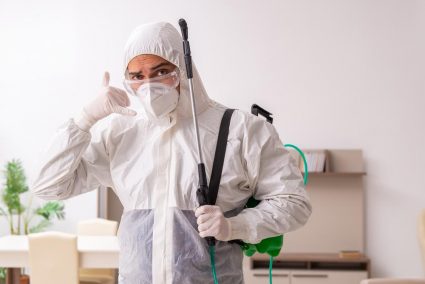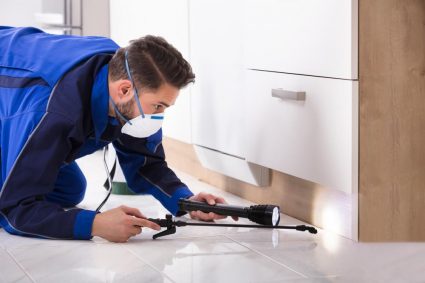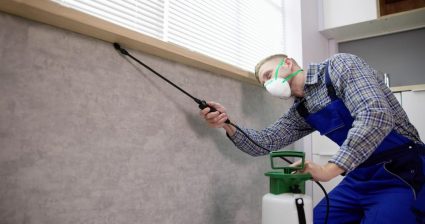
When frogs appear in large numbers in someone’s home or yard, they may be trying to warn that something is wrong with the environment (such as contamination).
This could be due to increased levels of chemicals in the water or air, which have caused them to leave their natural habitats and seek new ones.
It’s not every day that you find yourself needing to catch a frog in your house. But if you’re unlucky enough to find one hopping around in your living room, that’s a concern! You’ll need to get rid of them quickly and safely.
While frogs are generally harmless, they can be a nuisance if they enter your home. Here are a few tips for catching frogs in your house:
- Look for them in damp, dark places, such as furniture or behind appliances.
- Use a flashlight to help you see better into hiding spots.
- Bait them with food, such as insects or worms.
- Try using a net to catch them, especially when you find them at a difficult-to-reach place.
Fortunately, you can take some simple steps to ensure the frog is caught without harm. This article will provide all the tips and tricks you need to successfully catch a frog in your house – so read on to learn more!
What To Do When You Spot a Frog in Your House?

If you find a frog in your house, determine how it got inside your premises first.
There is a possibility that the frog might have just walked in through the window or the main door. They might also hide near ponds or other bodies of water, in the garden and flower beds, and under rocks or logs.
However, once you have located a likely spot, approach quietly and slowly so as not to startle the frog.
f you fail to determine how the frog got into your house, it’s possible that it came in through the sewer or drain system. In this case, you’ll need to call a professional to remove the frog.
Frogs are important to our ecosystem, as they help keep pests away. They also eat insects and worms, a huge problem in many areas worldwide. Here are some fun facts about them:
- Frogs can’t keep their eyes open while eating.
- They are excellent jumpers and can leap up to 20 times their body length!
- Frogs have highly permeable skin that absorbs water and oxygen directly into their bloodstream.
The Easiest Way To Catch a Frog

The process of catching a frog is relatively simple. If you find a frog in your house, the best thing to do is to catch it and release it outside.
By following these simple steps, you can safely remove frogs from your home without harming them:
- Get a large container, such as a Tupperware container or any plastic jar, so the frog can’t jump out.
- Place the container over the frog and gently slide the lid underneath until it covers the top.
- Carefully pick up the container and take it outside. Release the frog into some vegetation away from your house, and ensure no predators around can eat it.
- Wash your hands thoroughly with soap and water to remove bacteria or parasites that you might have gotten from the frog’s skin.
6 Effective Ways To Catch a Frog
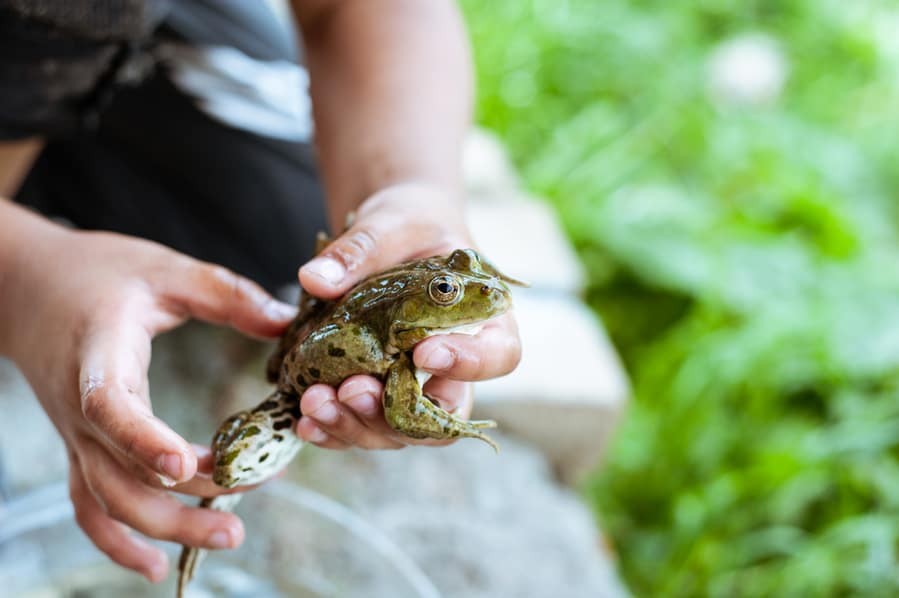
People would want to catch a frog in their house for many reasons: A frog can be a pet, an indicator of environmental pollution, or a home invasion.
Whatever the reason for catching the frog, it is important to use the right tools and techniques.
If you have a frog in your house, you can do a few things to catch it. Here are six effective methods that you may implement:
1. Use a Paper Towel & Water

Place the paper towel on the floor and soak it in water.
Then, wait for the frog to hop onto the towel. Once the frog is on the towel, you can pick it up and release it outside.
The frog might try to jump away, but the slippery paper towel will prevent it from getting away.
2. Use Your Hands To Grab It

It is the most common way to catch a frog. Just grab it behind with its legs and hold on tight.
Make sure you don’t squeeze too hard, as frogs can be delicate creatures.
However, this method can be difficult, as frogs are quick and agile, so it requires a good deal of patience and quick reflexes.
3. Use a Net
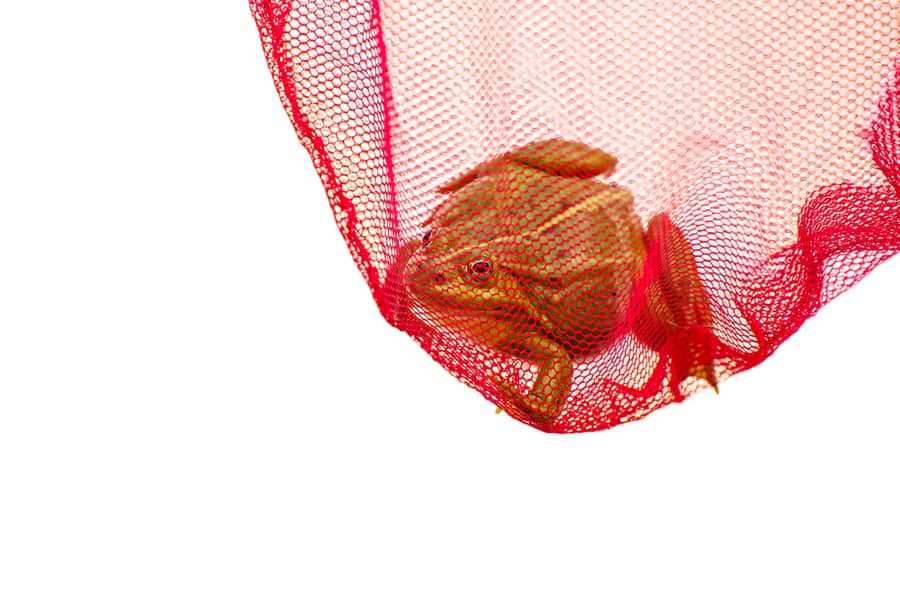
If you have a large frog or one good at jumping, you may need to use a net to catch it.
The most common method is to sweep the net through an area where you know frogs are present. It’s done either by hand or with the use of a stick.
Another method is to place the net over a frog-friendly container, such as a bucket, and then wait for a frog to jump in.
Once the frog is inside the net, you can lift it out and remove it from the container.
4. Setting Up Catching Area
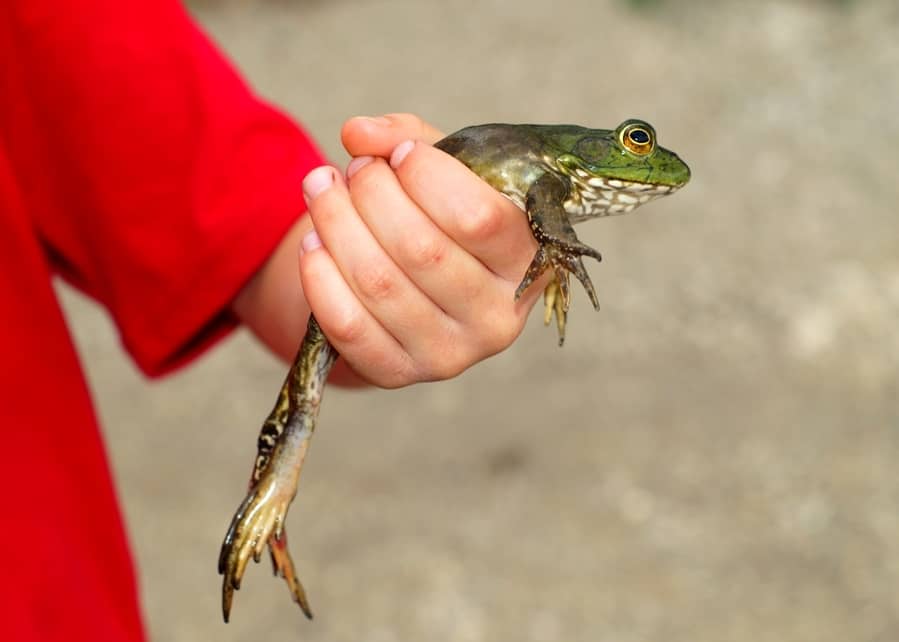
If you’re looking to catch a frog, one of the best places to look is in a damp and dark area.
It is because frogs are attracted to these types of environments, and they provide the perfect hiding spot for them.
When setting up your frog-catching area, ensure plenty of covers for the frogs to hide in. These can be leaves, logs, rocks, or even tall grass.
The more cover there is, the more likely a frog will reside in your area.
Once you’ve set up your frog-catching area, you must wait for the frogs to arrive!
5. Create a Frog Trap
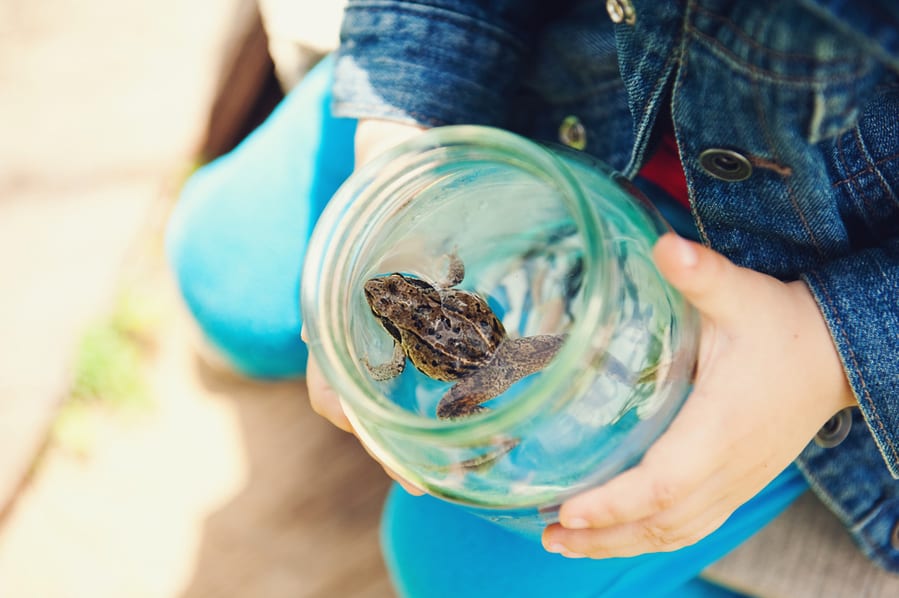
You can make a simple trap by using a container with an opening at the top (like a jar) and baiting it with something that frogs like to eat (like insects).
The frog will jump into the container but won’t be able to get back out, making it easy for you to catch it and release it outside.
6. Call In Reinforcements
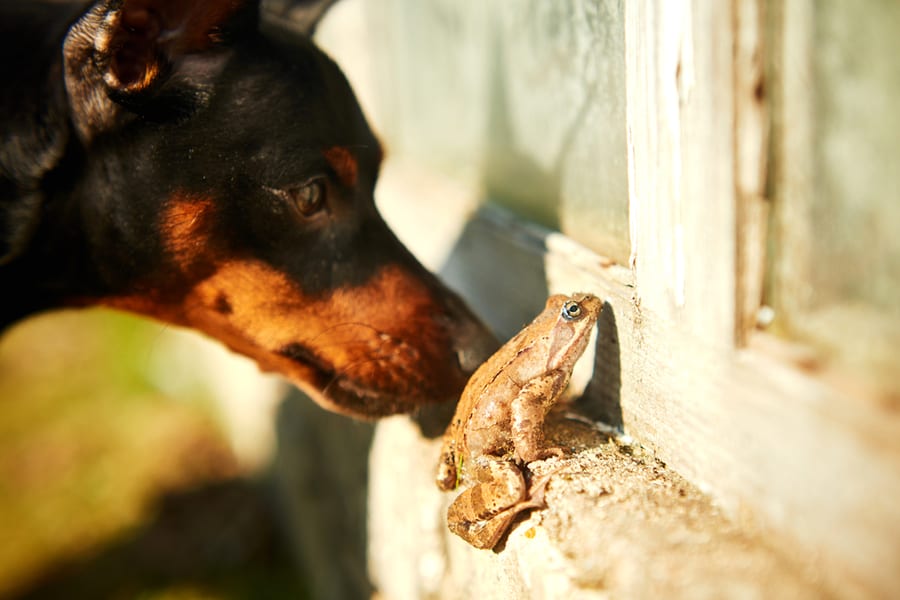
If all else fails, you can always try to enlist the help of another person or even an animal like a cat or dog (though this may not be ideal if you’re trying to keep your house pet-free).
Basic Tools Required in the Process
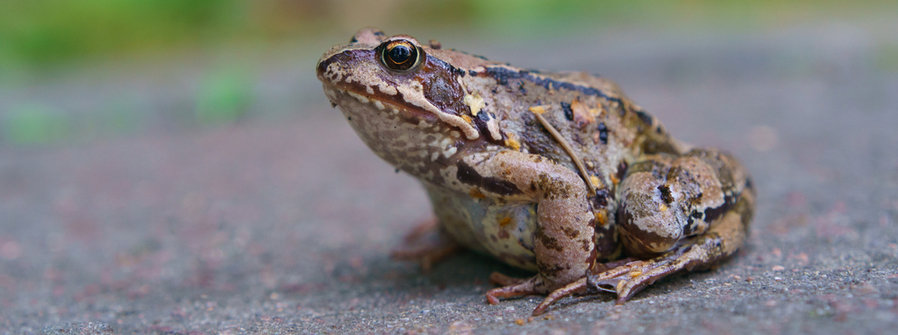
Catching a frog can be easy if you have the right tools and know what to do.
To catch a frog in your house, you will need the following items:
A Net
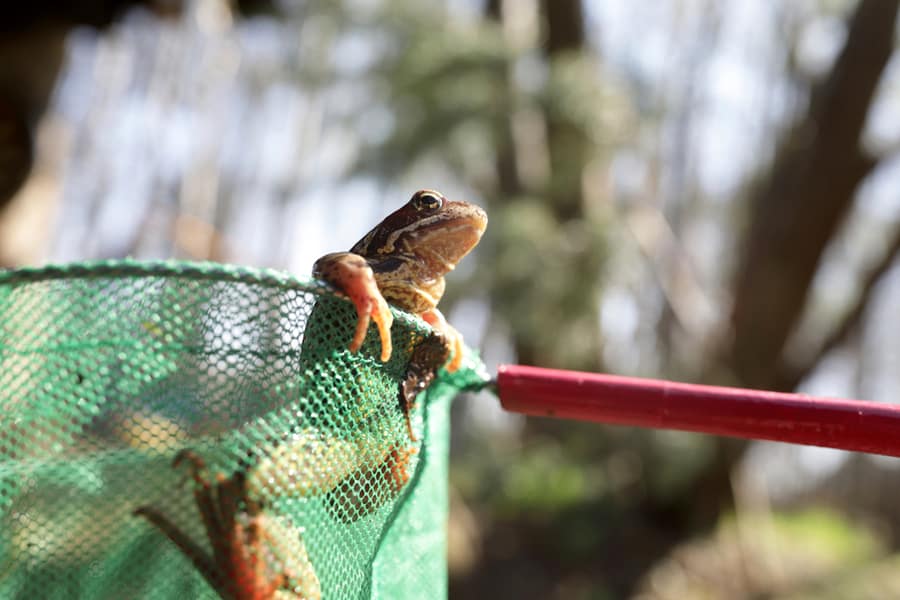
A net will help you to safely capture the frog so that you can release it outside.
A butterfly net works well for this.
A Bucket
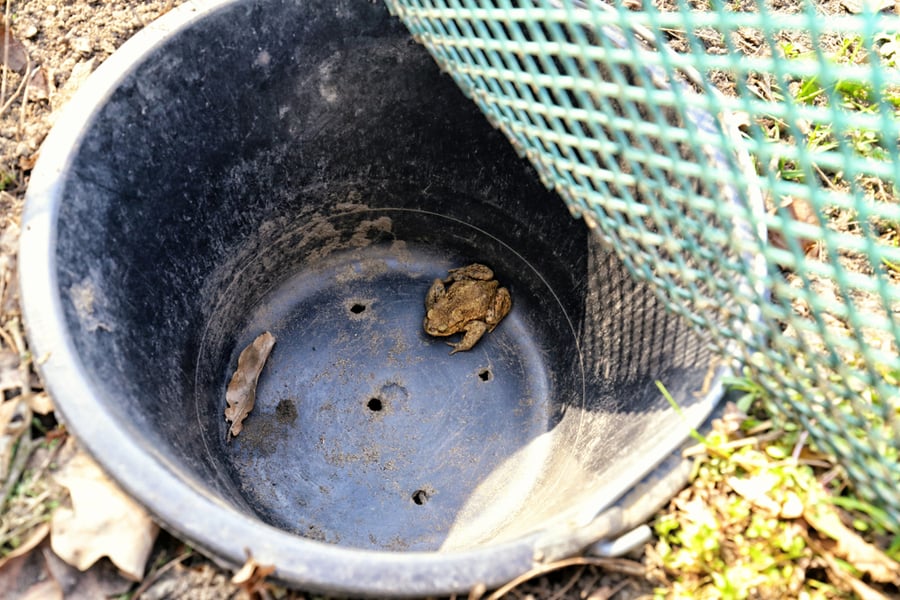
A bucket or container is required to trap the frog inside while transporting it outside.
A container with air holes is best so that the frog can breathe.
A Pair of Gloves

Gloves will protect your hands from the frog’s skin, which can be poisonous.
It also helps if you are squeamish about touching frogs.
A Piece of Cardboard & String
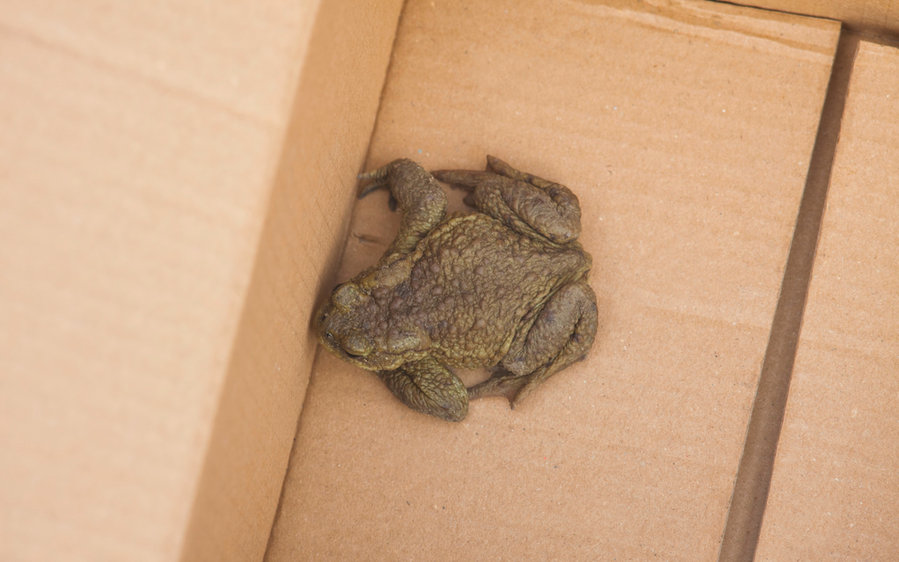
A piece of cardboard blocks the frog’s path and guides it into a container. It is used to create a makeshift net.
To do this, cut two holes in the cardboard and tie the string around the edges.
With these tools, you should be able to safely catch the frog and release it back into the wild.
Frogs can carry diseases that are harmful to humans and can also be a nuisance. If you have young children, they may be tempted to play with the frog, which could lead to them getting hurt.
Here are a few good reasons why you might want to get rid of these pesky creatures:
- Attract Snakes: Releases chemicals and odor that attract snakes.
- Make Noises: Croaking loudly can often be disruptive and annoying.
- Carry Diseases: Carry various diseases, including Salmonella.
- Messy Creatures: Leave a trail of mud and water behind, instantly turning your home into a mess.
- Poisonous Skin: Emit numerous toxins that can cause severe allergies or respiratory problems in humans.
Can You Lure out a Frog?

If you’ve ever had a frog in your house, you know how difficult it can be to catch. They seem to disappear into thin air as soon as you enter the room, and finding them can be frustrating.
Frogs are excellent at camouflage and can be very difficult to spot. However, there are some things you can do to lure a frog out of hiding so that you can catch them.
One method is to place a piece of food near where you think the frog is hiding. Frogs are attracted to movement, so try waving the food around a bit to get its attention.
Once the frog is focused on the food, you can slowly move it toward a container or bag to capture it.
You may also use a light source to attract the frog. Frogs are nocturnal animals, so they’re used to hiding in dark places during the day.
By shining a light into these dark corners, you can often lure the frog out so you can catch it.
Another way to try and lure a frog out of hiding is to make noise. Clapping your hands or tapping on a surface near where you think the frog is hiding can sometimes get its attention.
Once the frog is out in the open, you’ll have a better chance of catching it.
The Bottom-Line
Hopefully, this article has given you the knowledge and confidence to properly catch a frog in your house.
Remember that capturing a frog requires patience, technique, and always prioritizing safety for both you and the frog.
Catching a frog is not an exact science, but with these tips on how to do it effectively, hopefully, you can succeed in safely catching those pesky critters!
Frequently Asked Questions
Is It Important To Wet Your Hands Before Handling the Frog?
It is generally recommended that you wet your hands before handling a frog. Frogs are aquatic creatures with extremely sensitive skin that can easily dehydrate.
When a frog’s skin gets dry, it can crack and loses the ability to absorb the water, increasing its chances of death.



